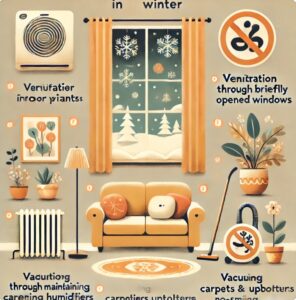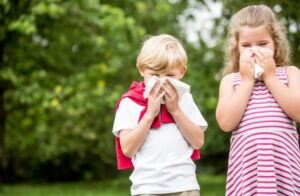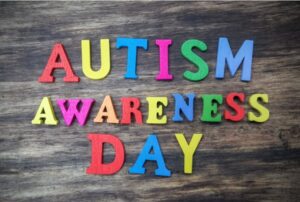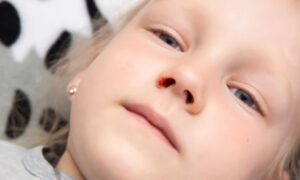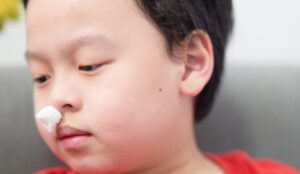Spring is a season of renewal, with rising temperatures and blooming plants. However, it is also a high season for the spread of pollen, viruses, and other infectious agents, making it a time when children are particularly susceptible to illness. Below are some common pediatric diseases in spring and prevention tips to help parents safeguard their children's health.
1.Pollen Allergy (Seasonal Allergic Rhinitis)
Causes and Symptoms
Spring is the peak season for pollen release from plants, and many children are allergic to pollen, showing symptoms of seasonal allergic rhinitis. These symptoms include runny nose, nasal congestion, sneezing, itchy and watery eyes. In more severe cases, children may experience sore throat and ear blockage, which can impact their daily life and learning.
Prevention Measures
Parents should minimize their children's outdoor activities during times of high pollen concentration, such as early morning and late evening, or have them wear masks when outside. After returning home, it's advisable to change their clothes and wash their hands and face to reduce pollen exposure. Using an air purifier indoors can also help lower pollen levels. For children with known allergies, it is recommended to start using antihistamines under a doctor’s guidance before the allergy season begins.
2. Asthma
Causes and Symptoms
Spring is a high-risk period for allergic asthma, especially in children who are sensitive to pollen. The typical symptoms of asthma include coughing, shortness of breath, chest tightness, and wheezing, which can worsen when exposed to allergens such as pollen, dust mites, or animal dander.
Prevention Measures
For children with asthma, parents should ensure they have their prescribed asthma medication on hand and administer it at the first sign of symptoms to prevent worsening. Reducing exposure to allergens is essential, so avoid outdoor activities during high pollen counts and ensure the living environment is free from dust and mites. Regularly check the asthma inhaler to ensure it is functioning properly for use when needed.
3. Chickenpox
Causes and Symptoms
Chickenpox is a common contagious disease caused by the varicella-zoster virus. While chickenpox can occur year-round, spring is a peak season, especially in crowded places like schools and daycare centers. The main symptoms include fever, rash, and itching. The rash develops into blisters and eventually scabs.
Prevention Measures
The most effective way to prevent chickenpox is through vaccination. If a child contracts chickenpox, it is important to keep them home, away from other children, to prevent the spread of the virus. Maintaining good hygiene by keeping the skin clean and avoiding scratching is crucial to prevent secondary infections.
4. Hand, Foot, and Mouth Disease (HFMD)
Causes and Symptoms
Hand, foot, and mouth disease is caused by enteroviruses and is highly contagious. Although more common in summer, HFMD can also occur in spring. Symptoms include fever, mouth ulcers, and red spots or blisters on the hands, feet, and buttocks. HFMD spreads easily in crowded environments such as kindergartens and daycare centers.
Prevention Measures
Frequent hand washing is one of the most important ways to prevent HFMD. Parents should teach their children to wash their hands with soap after using the restroom, before eating, and after touching unclean surfaces. Avoid close contact with infected individuals, and if symptoms appear, seek medical attention and isolate the child to prevent further transmission.
5. Conjunctivitis (Pink Eye)
Causes and Symptoms
Spring is a high-risk season for both allergic and bacterial conjunctivitis. Allergic conjunctivitis is caused by exposure to pollen and dust, while bacterial conjunctivitis occurs when children rub their eyes after coming into contact with contaminated surfaces. Symptoms include redness, tearing, itching, and in the case of bacterial conjunctivitis, discharge.
Prevention Measures
Parents should teach their children not to rub their eyes and to wash their hands frequently. Personal items like towels and pillows should not be shared with others. If symptoms develop, it is important to seek medical treatment and use prescribed eye drops as directed.
Causes and Symptoms
Spring's fluctuating temperatures can promote the growth of bacteria and viruses, leading to an increased risk of gastroenteritis. Children may experience diarrhea, vomiting, and fever. Common pathogens include rotavirus and norovirus, and gastroenteritis can spread easily in schools and childcare centers.
Prevention Measures
Good personal hygiene is key to preventing gastroenteritis. Parents should encourage children to wash their hands before meals and after using the bathroom. Additionally, it is important to ensure that food is properly prepared and stored to prevent contamination. Keeping the household environment clean and sanitary can also reduce the risk of infection.
Spring is a high season for various childhood diseases. While enjoying the beauty of the season, parents must remain vigilant about their children's health. From preventing allergies to ensuring vaccinations are up to date, timely actions can significantly reduce the risk of illness. Proper care and preventive measures will help children stay healthy and free from the burdens of disease during the spring season.





